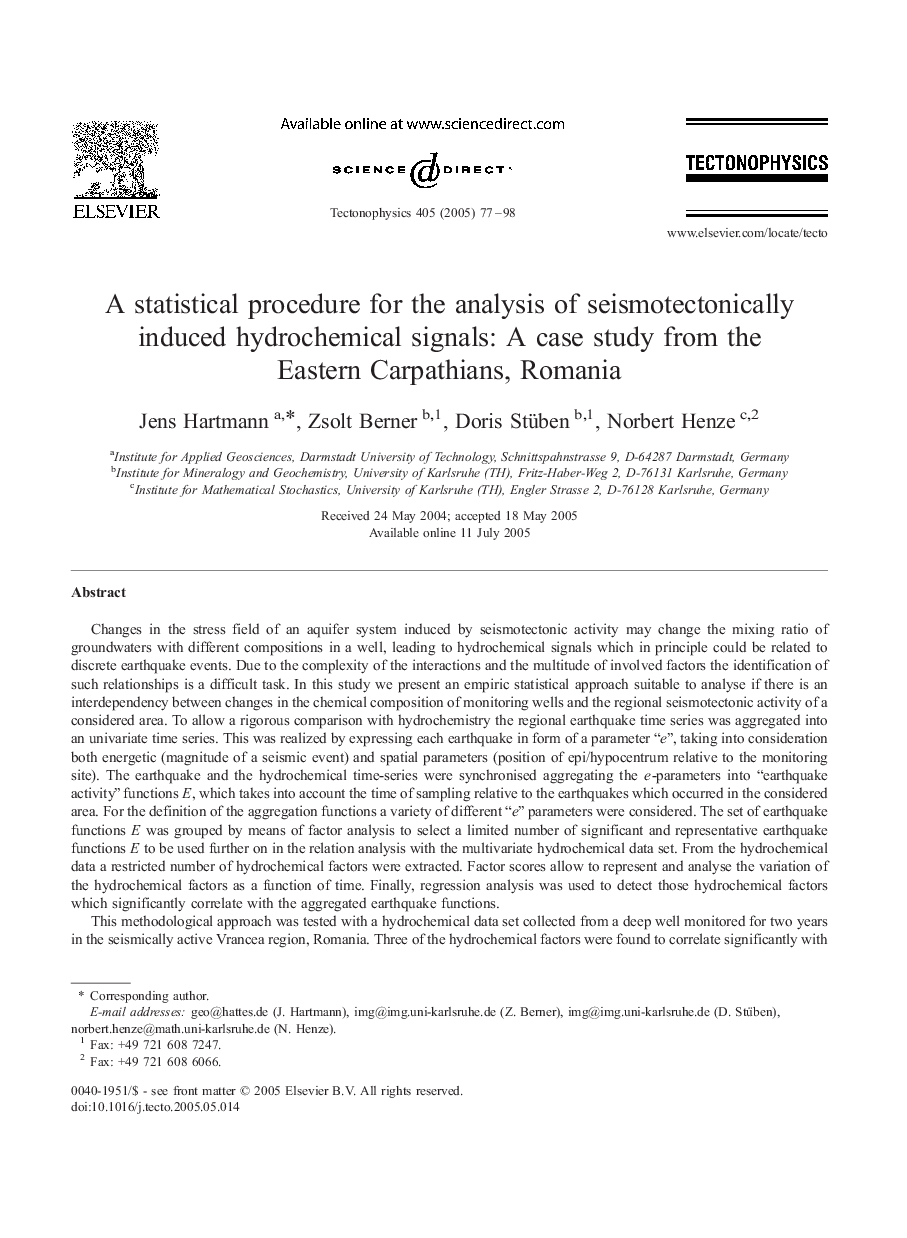| Article ID | Journal | Published Year | Pages | File Type |
|---|---|---|---|---|
| 9527126 | Tectonophysics | 2005 | 22 Pages |
Abstract
This methodological approach was tested with a hydrochemical data set collected from a deep well monitored for two years in the seismically active Vrancea region, Romania. Three of the hydrochemical factors were found to correlate significantly with the considered earthquake activities. A screening with different time combinations revealed that correlations are strongest when the cumulative seismicity over several weeks was considered. The case study also showed that the character of the interdependency depends sometimes on the geometrical distribution of the earthquake foci. By using aggregated earthquake information it was possible to detect interrelationships which couldn't have been identified by analysing only relations between single geochemical signals and single earthquake events. Further on, the approach allows to determine the influence of different seismotectonic patterns on the hydrochemical composition of the sampled well. The method is suitable to be used as a decision instrument in assessing if a monitoring site is suitable or not to be included in a monitoring net within a complex earthquake prediction strategy.
Related Topics
Physical Sciences and Engineering
Earth and Planetary Sciences
Earth-Surface Processes
Authors
Jens Hartmann, Zsolt Berner, Doris Stüben, Norbert Henze,
